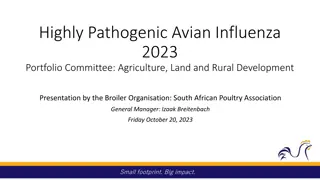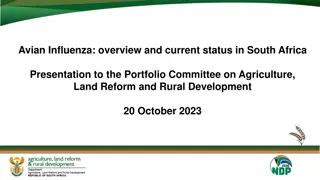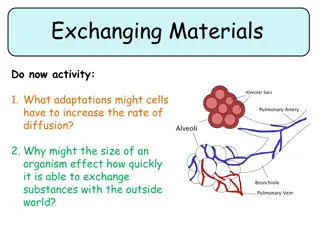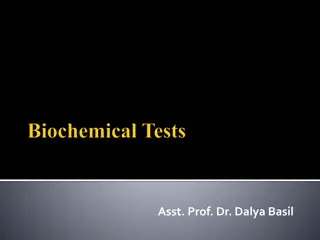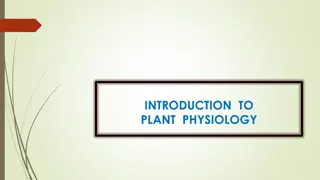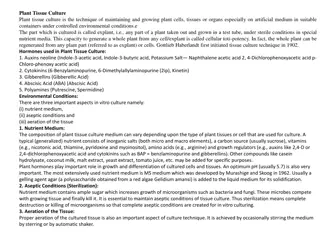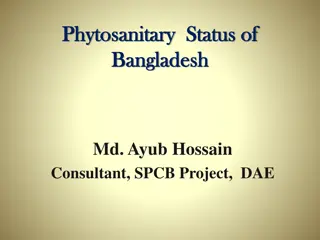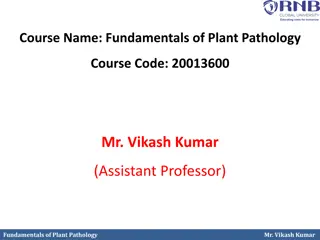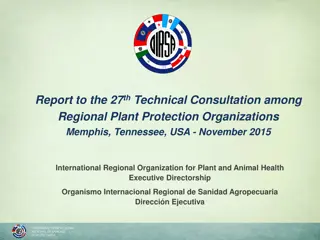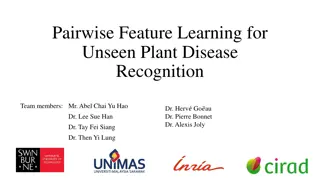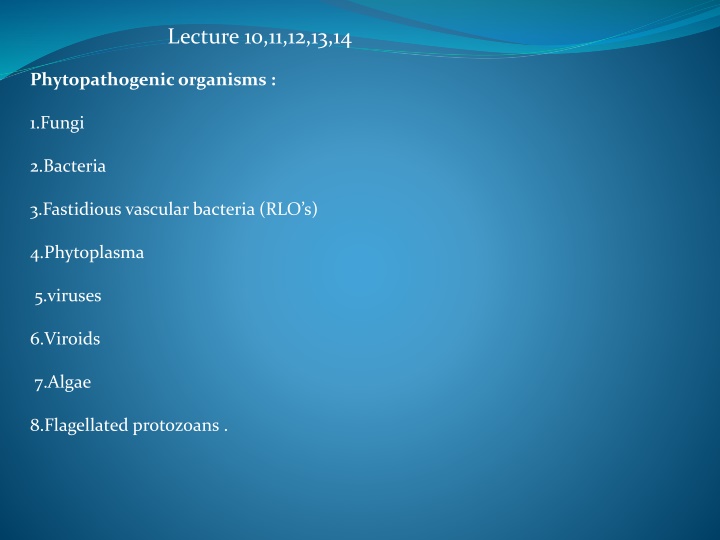
Phytopathogenic Organisms: Fungi, Bacteria, and More
Delve into the world of phytopathogenic organisms, including fungi, bacteria, fastidious vascular bacteria, phytoplasma, viruses, viroids, algae, and flagellated protozoans. Learn about their characteristics, examples of diseases they cause, and how they impact plant health. Explore the diversity of these harmful agents and their effects on plants.
Download Presentation

Please find below an Image/Link to download the presentation.
The content on the website is provided AS IS for your information and personal use only. It may not be sold, licensed, or shared on other websites without obtaining consent from the author. If you encounter any issues during the download, it is possible that the publisher has removed the file from their server.
You are allowed to download the files provided on this website for personal or commercial use, subject to the condition that they are used lawfully. All files are the property of their respective owners.
The content on the website is provided AS IS for your information and personal use only. It may not be sold, licensed, or shared on other websites without obtaining consent from the author.
E N D
Presentation Transcript
Lecture 10,11,12,13,14 Phytopathogenicorganisms : 1.Fungi 2.Bacteria 3.Fastidious vascular bacteria (RLO s) 4.Phytoplasma 5.viruses 6.Viroids 7.Algae 8.Flagellated protozoans .
1.Fungi: Fungi are eukaryotic, spore bearing, achlorophyllousorganisms that generally reproduce sexually and asexually and whose filamentous, branched somatic structures are typically surrounded by cell walls consisting chitin or cellulose or both with many organic molecules. Ex: Lateblightof potato-Phytophthora infestans, Rice blast-Pyricularia oryzae 2.Bacteria: Bacteria are extremely minute, rigid, essentially unicellular organisms free of true chlorophyll and generally devoid of any photosynthetic pigment, most commonly multiplying asexually by simple transverse fission, the resulting cell, being of equal or nearly equal in size. Ex: Citrus canker: Xanthomonas axanopodis pv. Citri, Fire blight of apple-Erwinia amylovora 3.Fastidious vascular bacteria (RLO s):Fastidious vascular bacteria are similar to bacteria in most respects but are obligate parasites or can not be grown on routene bacteriological media. Ex: Gram negative xylem inhabiting bacteria-Pierce s disease of grape-Xylella fastidiosa Gram positive xylem inhabiting bacteria-Ratoon stunting of sugarcane-Clavibacter xyli xyli Phloem inhabiting bacteria- Citrus greening-Candidatus liberobacter asiaticus
4.Phytoplasma: Phytoplasmasare pleomorphic, wall less prokaryotic micro organisms, that can infect plants of phloem tissue and can not yet to be grown in culture. Ex:Sesamum phyllody, little leaf of brinjal 5.Virus: A sub-microscopic, obligate parasite consisting of nucleic acid and protein coat that multiplies only intracellularlyand is potentially pathogenic. Ex: Tobacco mosaic-Tobacco mosaic virus 6. Viroids: Small, low molecular weight ribonucleic acids(RNA) that can infect plant cells, replicate themselves and cause disease in plants. Ex:Potato spindle tuber disease-Potato spindle tuber viroid 7.Algae: Algae are eukaryotic,photosynthetic, uni or multicellularorganisms, containing chlorophyll and a few algae mainly green algae cause plant diseases. Ex: Red rust of guava-Cephaleuros sp.
8.Flagellated protozoans :Protozoa are microscopic,nonphotosynthetic, eukaryotic,flagellate motile,single celled animals. Ex: Phloem necrosis of coffee-Phytomonas leptovasorum 9.Phanerogamic parasites: 1) These are obligate parasites 2) They have no roots 3) They have haustoria 4) Mainly attacked vascular tissues of higher plants i.e. xylem and phloem 5) They are act as a bridge between the two plants for transmission of virus from one plant to another plant 6) They are propagated by seeds and stem cuttings 7) Partial root and stem parasites have leaves Complete stem parasite-Cuscuta Partial stem parasite-Loranthus Complete root parasite-Orobanche Partial root parasite-Striga

